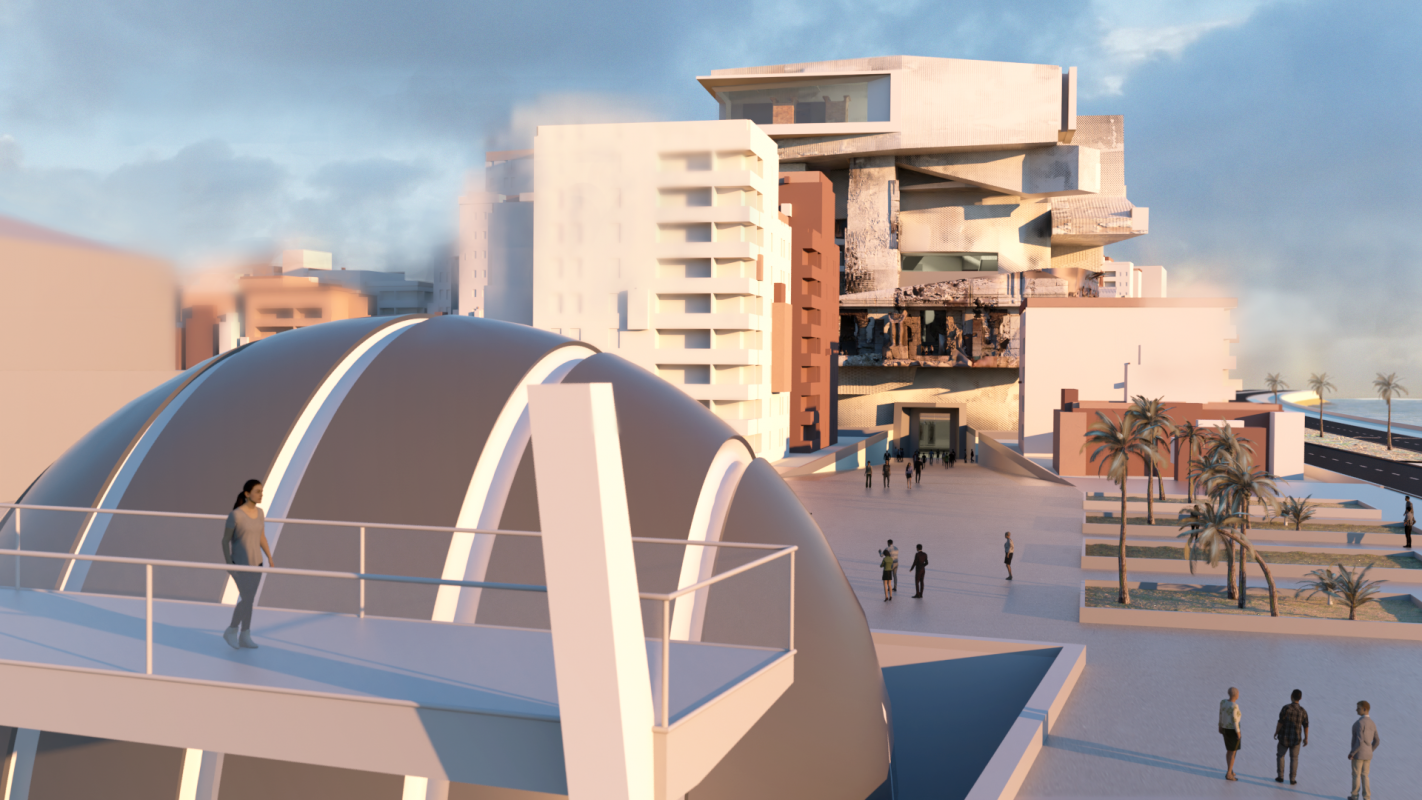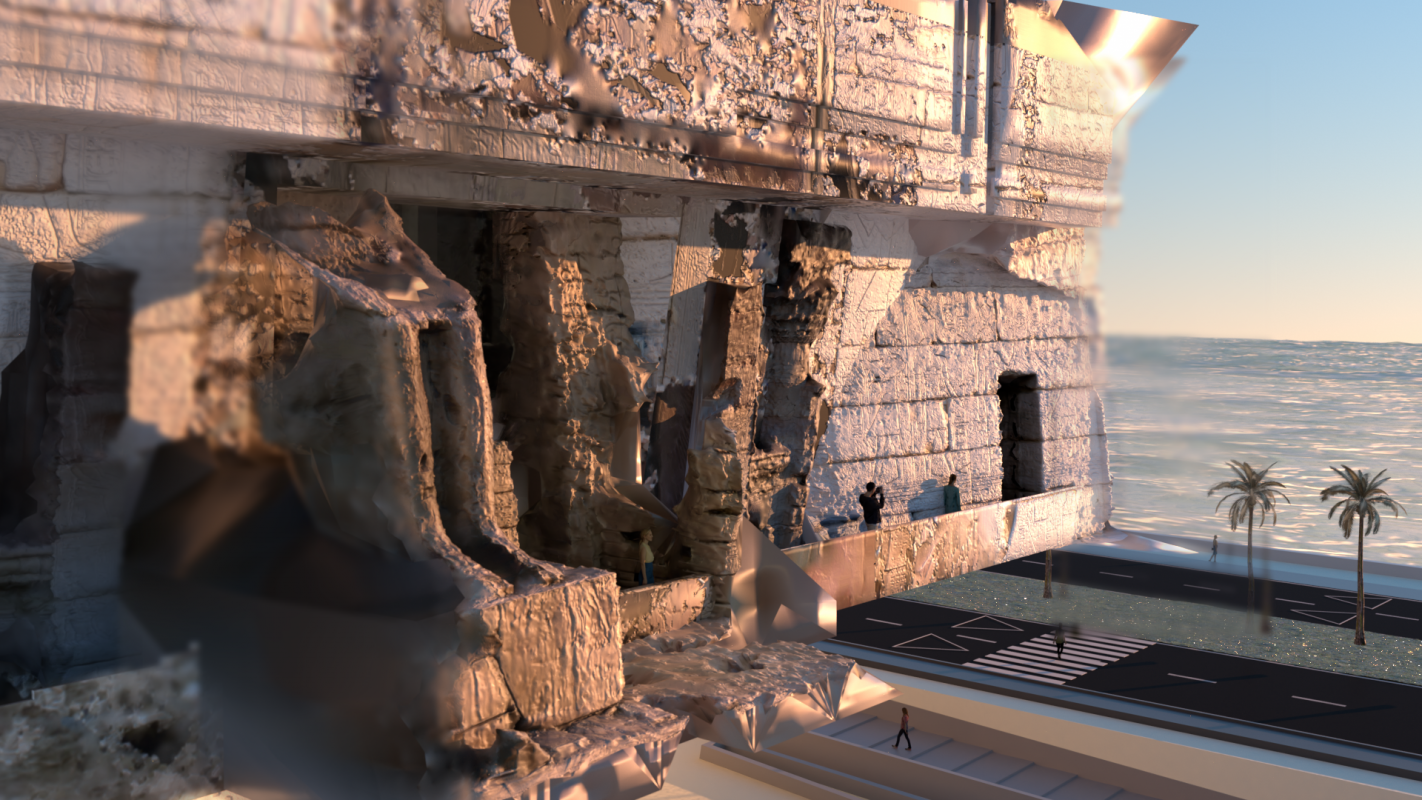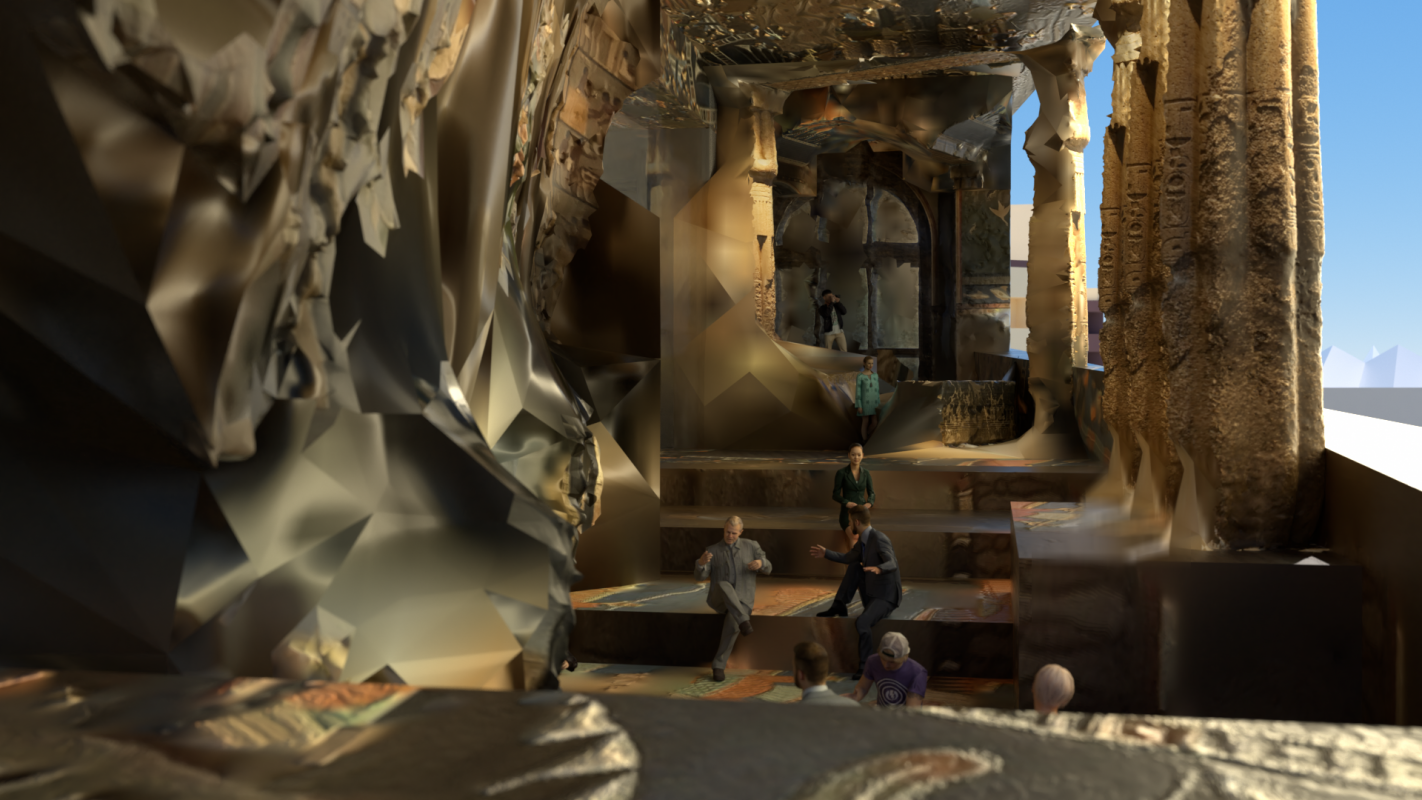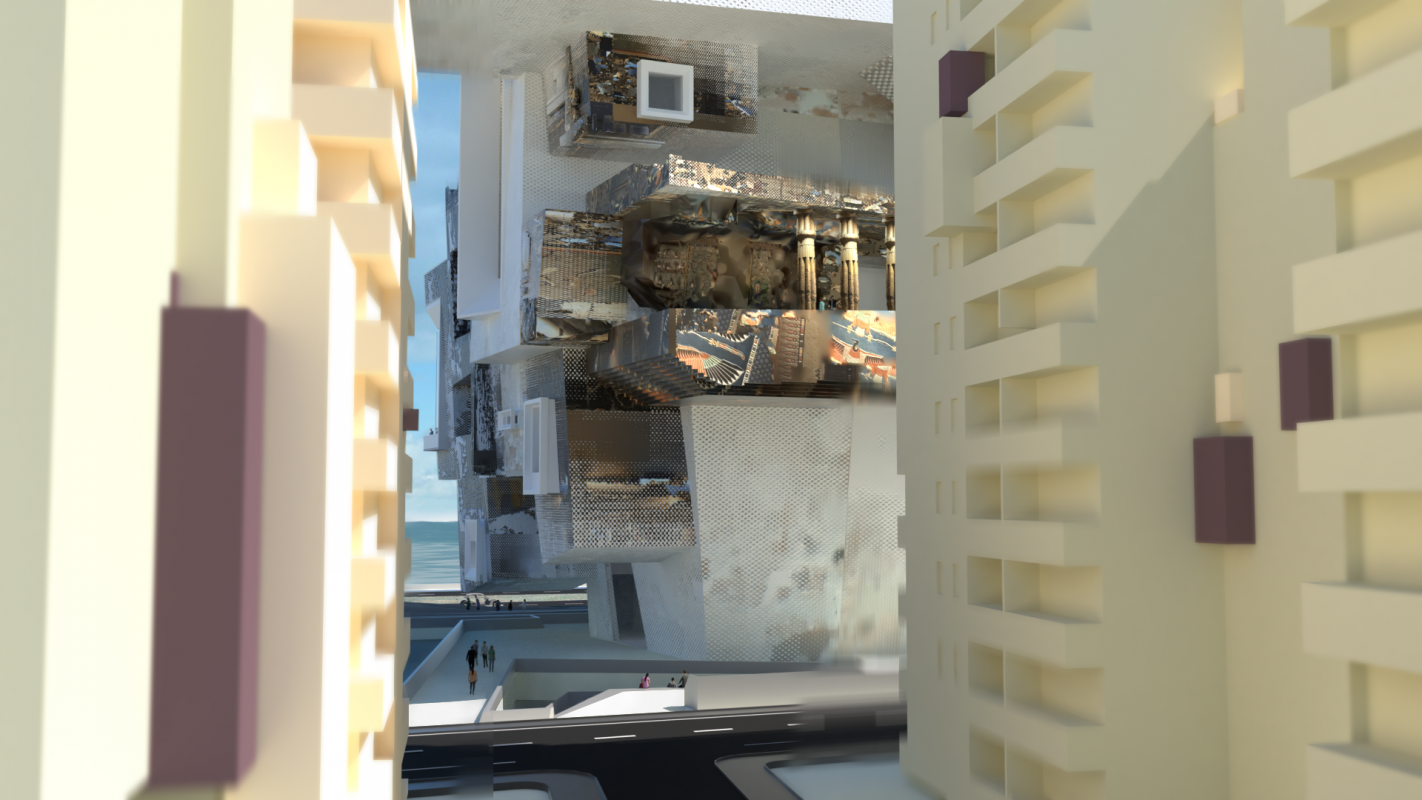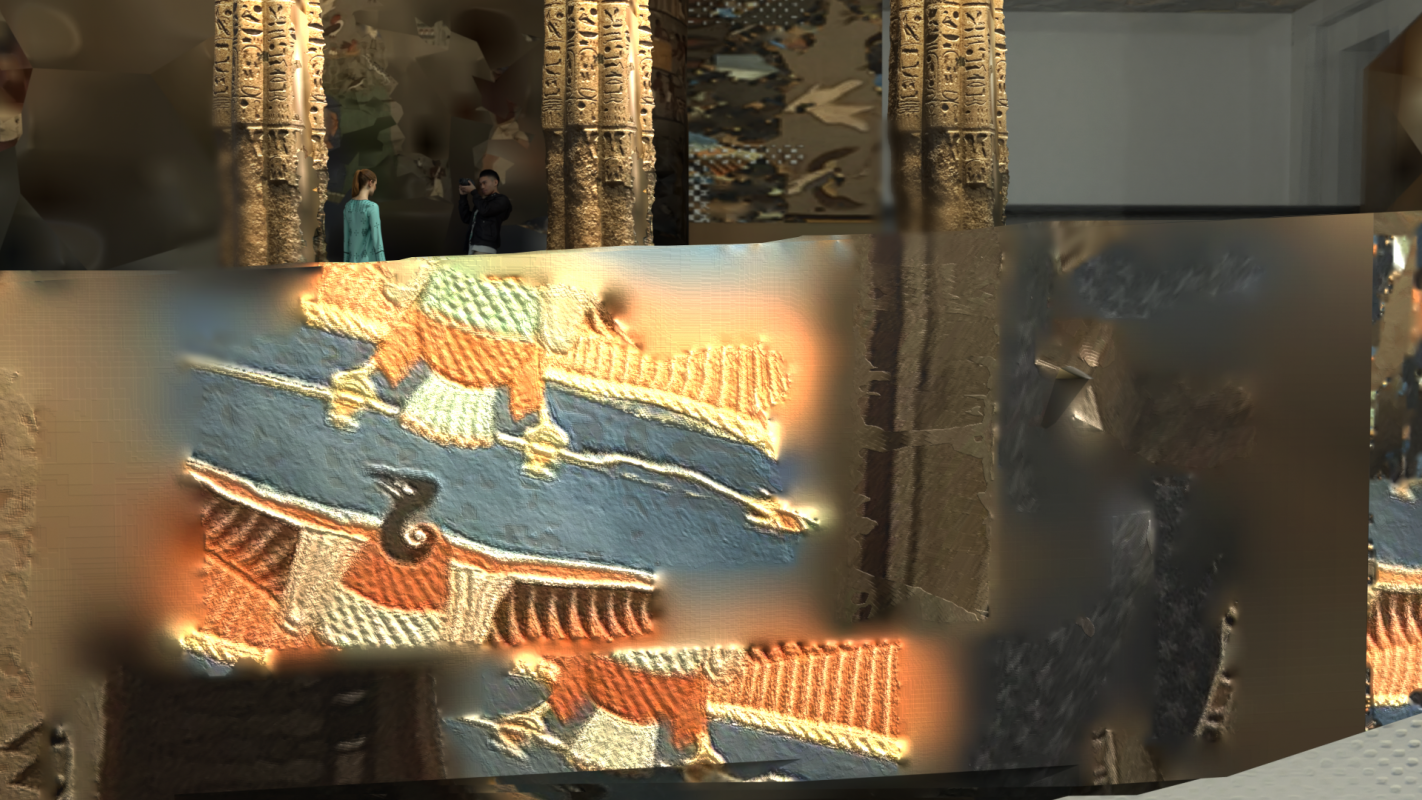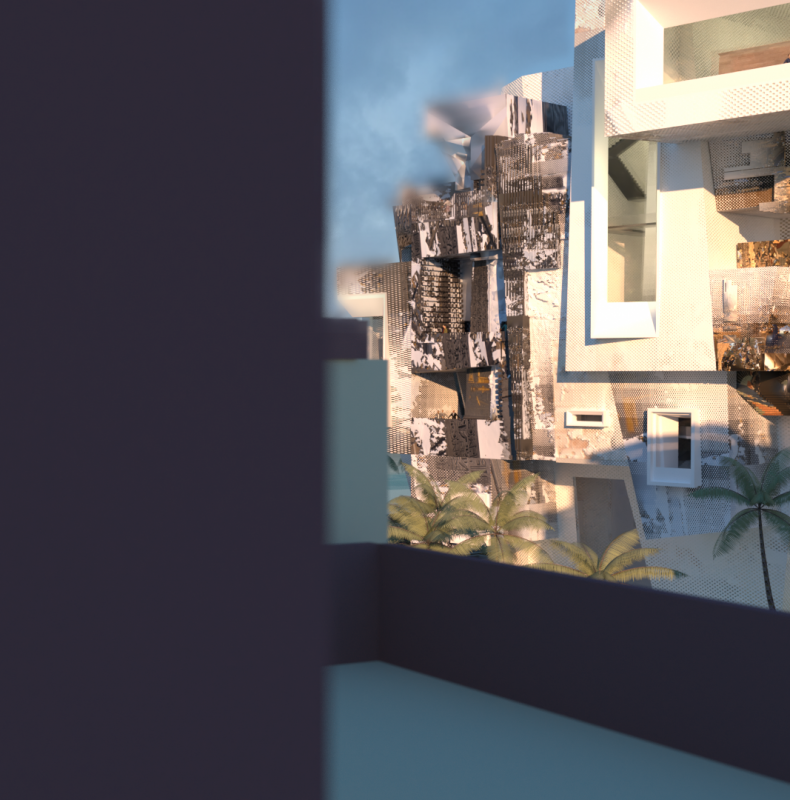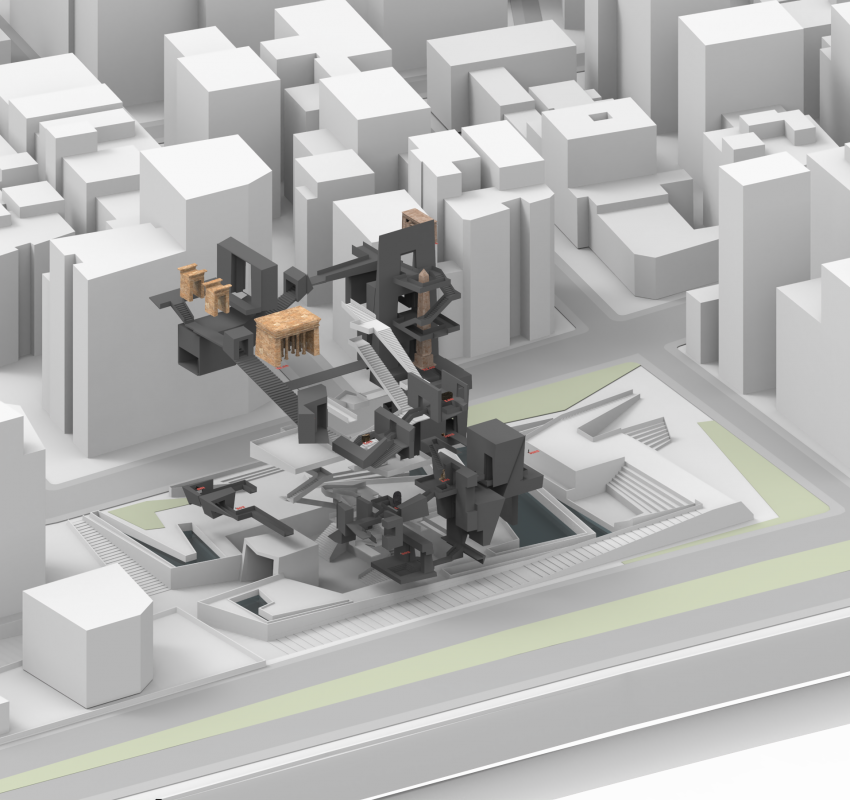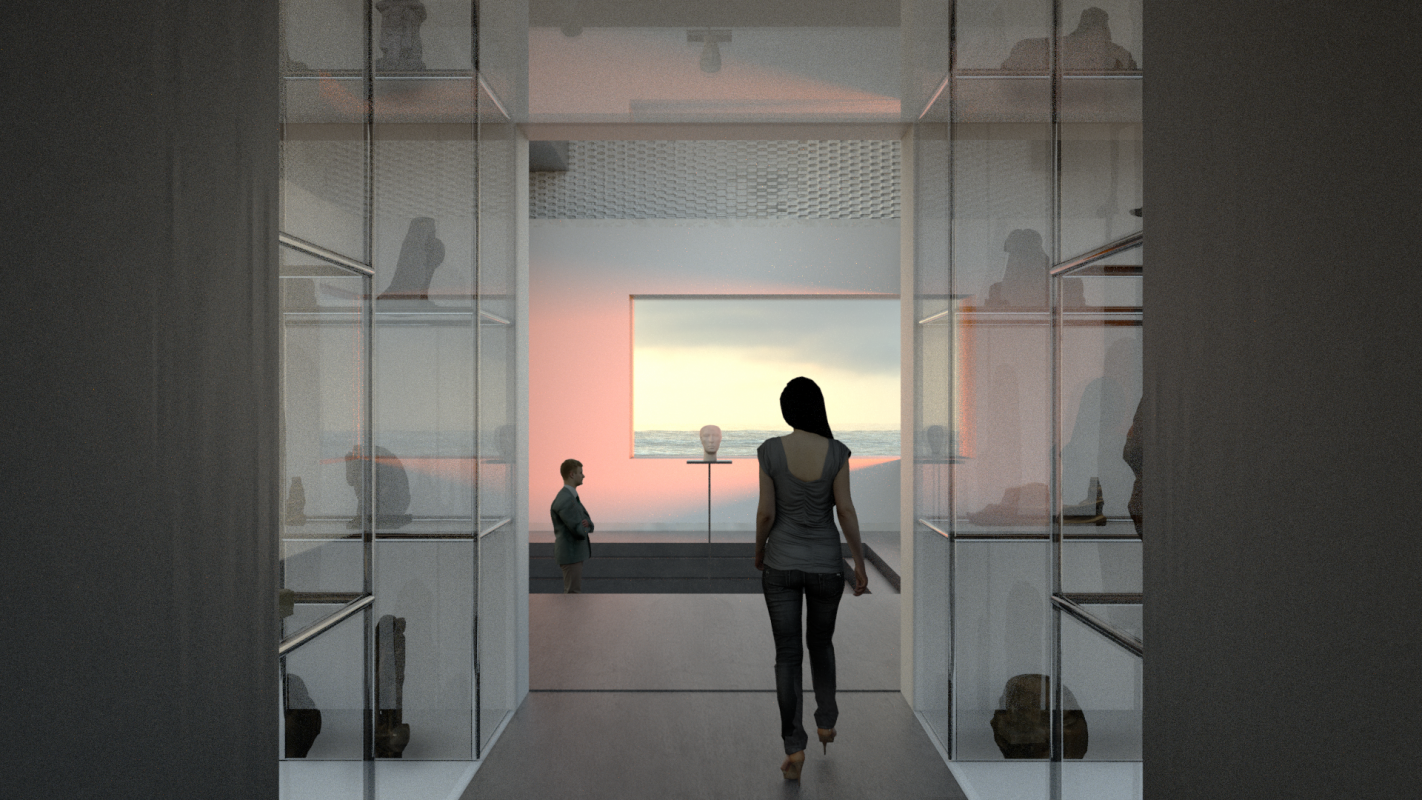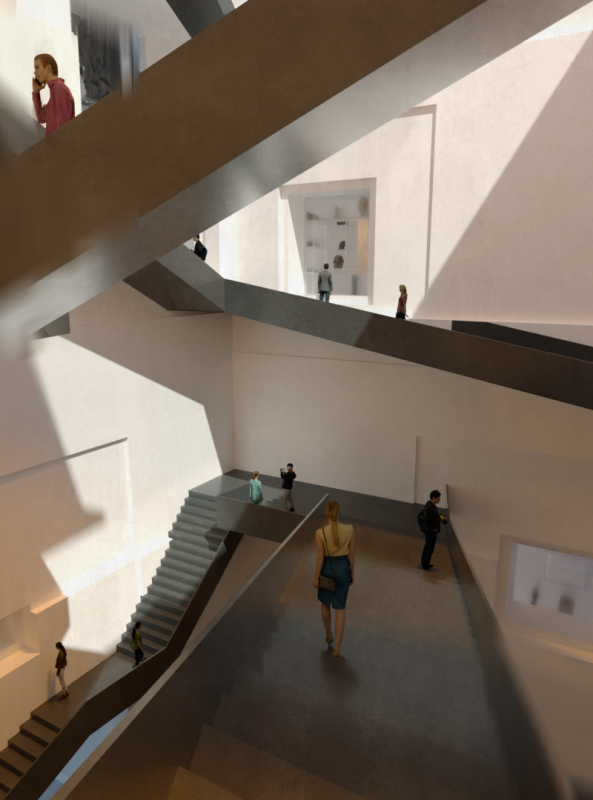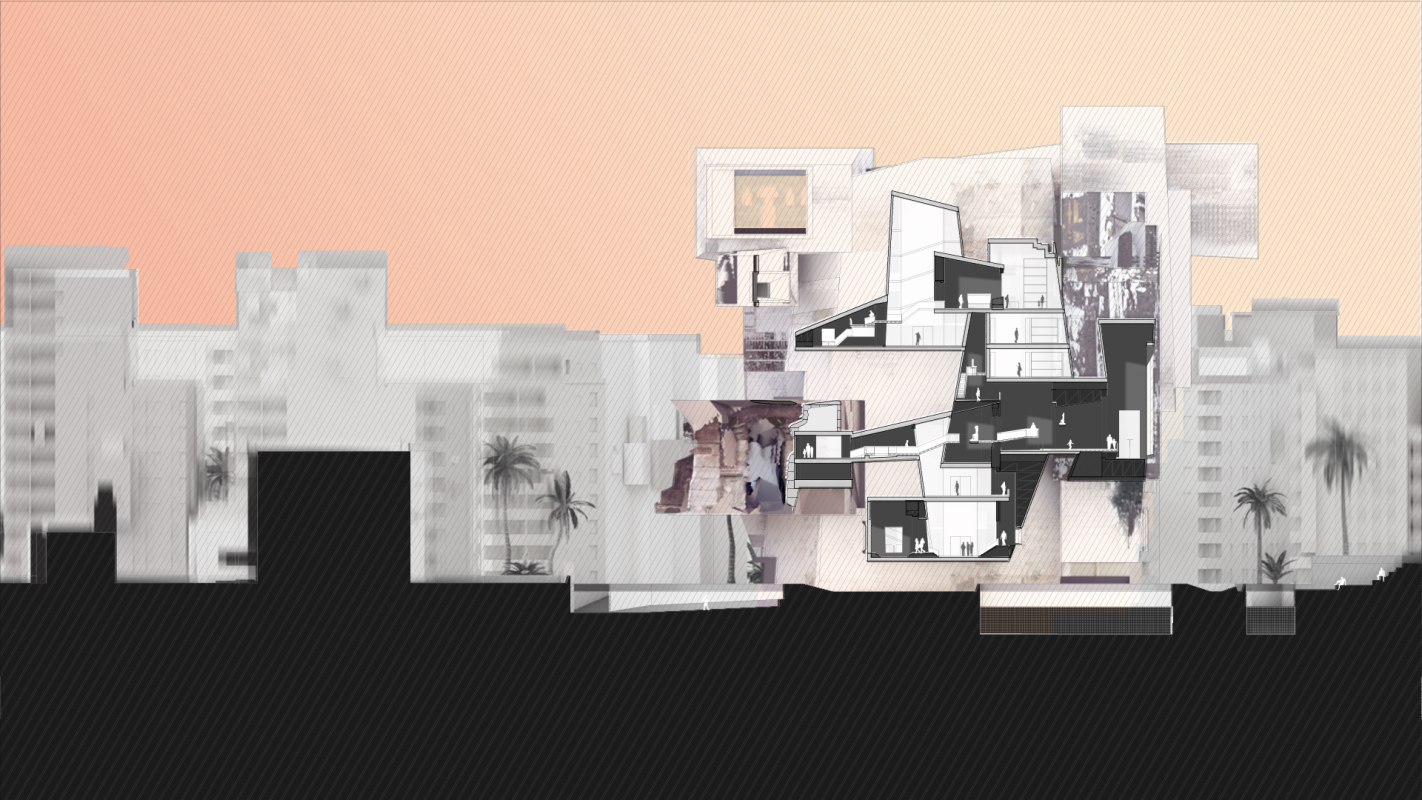The Alexandria Museum investigates how repatriated Egyptian items can be exhibited in their country of origin, as originals or as reproductions using 3D scanning technologies. The circulation and form of the museum respond directly to the artifacts by using scenographic principles of approaches, views and framing, movement and layering. In doing so, the presence of the original and replicated repatriated artifacts in Alexandria is amplified, the visitor is engaged in a physical and visual interaction with the exhibition pieces and the collection is opened up to the public eye.
Betreuer: Univ.-Prof. Mag.arch. Greg Lynn
Pap, Bence Univ.-Ass. Mag.arch. Ozvaldic, Maja Univ.-Ass. Mag.arch. Yu, Kaiho Univ.-Ass. MA Murero, Martin Univ.-Ass. Dipl.-Ing.
The Alexandria Museum investigates how repatriated Egyptian items can be exhibited in their country of origin, as originals or as reproductions using 3D scanning technologies. The circulation and form of the museum respond directly to the artifacts by using scenographic principles of approaches, views and framing, movement and layering. In doing so, the presence of the original and replicated repatriated artifacts in Alexandria is amplified, the visitor is engaged in a physical and visual interaction with the exhibition pieces and the collection is opened up to the public eye.
The artifacts, which will never be repatriated are being replicated through photogrammetry. The byproduct of the replication process, such as texture maps and point cloud data, have been used in the design of the museum as tectonic elements of block, brick and masonry.
The artifacts, which will never be repatriated are being replicated through photogrammetry. The byproduct of the replication process, such as texture maps and point cloud data, have been used in the design of the museum as tectonic elements of block, brick and masonry.
The artifacts, which will never be repatriated are being replicated through photogrammetry. The byproduct of the replication process, such as texture maps and point cloud data, have been used in the design of the museum as tectonic elements of block, brick and masonry.
The circulation responds to the qualities of the artifact, creates views from which to view it and positions it against the backdrop of the city. In this way it is impossible to view the artifacts without urban context.
The circulation of the Alexandria Museum directly responds to the qualities of the artifact, creates views from which to view it and positions it against the backdrop of the city. In this way it is impossible to view the artifacts without urban or historic context. The circulation guides the visitor through a narrated historic route through the museum collection.
The circulation responds to the qualities of the artifact, creates views from which to view it and positions it against the backdrop of the city. In this way it is impossible to view the artifacts without urban context.
The circulation responds to the qualities of the artifact, creates views from which to view it and positions it against the backdrop of the city. In this way it is impossible to view the artifacts without urban context.
The section showcases how deep views through the museum are being created.
The Alexandria Museum appears as a landmark for Egyptian art and architecture on the coastline of the city of Alexandria.

